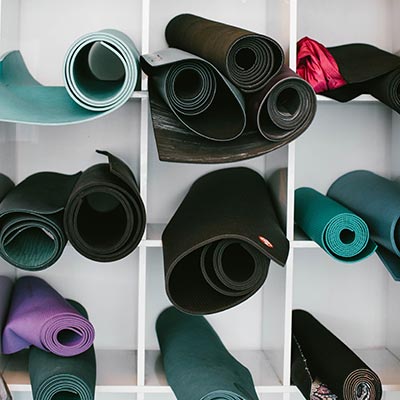
For as long as I’ve been alive, yoga has always been popular. It’s a form of movement that has gained a ton of traction here in the west, despite having Indian roots, and it’s held this popularity for decades, at least.
Today, we’re going to look at the real deal with yoga; what it’s all about, how it really works, and whether or not you’re going to get the results you want from yoga.
What IS Yoga?
What we call yoga is Hatha; a specific, physical type of spiritual meditation found in Hindu culture. Hatha Yoga, as it’s known, is all about relaxation through the body, and this is why it’s popular … it’s a great stretching and breathing-centered approach to mobility and recovery.
Hatha Yoga is a whole-body movement process, which is primarily involved in holding a number of positions that can be quite challenging or limited in the beginner. This is because they are posture-demanding, and thus target the development of good posture and movement capacity.
These are often targeting the hips, spine, and shoulders, areas we all know are important and commonly limited in their range.
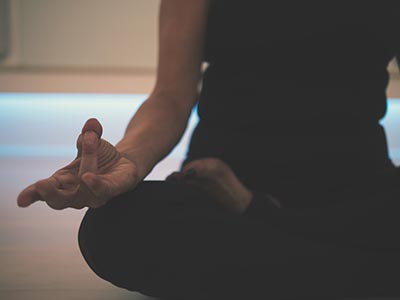
What Yoga Can Do For You
So, what can you reasonably expect from yoga? There’s obviously a lot of hazy claims around it as a form of healthy exercise, but it’s never quite this simple. We know, intuitively, that there’s a difference between weight training and yoga, but what kind of results do we expect from it?
Flexibility Development
This is the main reason that yoga is popular among both average people and elite athletes. It’s a form of structured mobility work which most people will only ever perform in a yoga class, and likely never follow in any other context.
This is a great benefit because it allows for the improvement of basic coordination and reducing the excessive activity of tight muscles. These often cause pain, discomfort, limited movement, or contribute to long-term postural problems.
For flexibility, yoga isn’t the best way to get the most results per minute, but it’s also a guided and relaxing class. In this sense, it’s better to use yoga to get flexibility results than it is to not do flexibility work, or to have an uneducated and non-committal approach.
Postural And Positional Development
The positions of yoga also incorporate postural focuses. Sitting positions and warrior poses for example, both focus on effective posture in the hips, core, and upper back. These are commonly injured or inhibited areas, so developing posture on a week-to-week and month-to-month basis.
These are crucially important now, especially, with the amount of sitting that the average person does on a daily basis. You should already know we’re skeptical about spending too much time sitting, and yoga seems to be well set-up to prevent the worst postural effects, helping to mobilize tight areas and reinforce good posture through practice.
The integration of breathing practice into this is also great, since it’s in posture where we see improvements most closely associated with healthy breathing habits (e.g. in the upper back and core).
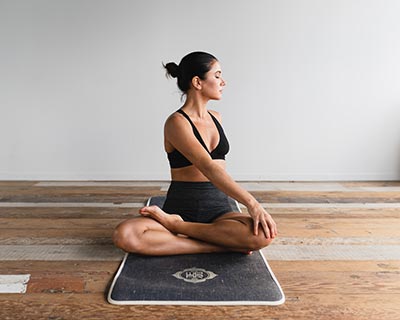
Improving Coordination And Balance
One of the most underrated benefits of yoga is how it helps to develop coordination and balance over time.
When you look at some of the more advanced positions, and the progressions towards them, it’s clear that single leg balance and reduced support balance are a clear theme. These are some of the benefits that are going to be most useful when you’re relatively new to exercise, since balance and coordination are crucial to future movement quality and control over your own body.
Simply developing proprioception, the internal feeling/awareness of where your body is, can be a significant benefit. This is something most people have never even considered but yoga, like other forms of exercise, can help to develop this trait.
Who Should Use It And Why?
With these benefits in mind, it’s obvious that yoga has different roles for different people. While it’s safe to say that the majority of people can benefit from it, it’s useful to be clear on who should do what, and how, to get the most from yoga.
Older People: Maintaining And Reinforcing Function
For elderly populations, yoga ticks many of the boxes we look for with respect appropriate exercise.
Specifically, those with reduced physical capacity and issues like sarcopenia and osteoporosis risk, yoga offers a low-impact form of exercise that develops multiple characteristics at once: strength, stability, balance, coordination, flexibility, and the hormonal-psychological benefits we associate with exercise.
It’s not surprising then, that studies tell us that yoga is a great quality of life booster and fall-risk reducer in elderly populations. These are amazing benefits that are accessible to anyone, require no equipment, and offer the benefit of a social, class-based environment. Win … win … WIN!
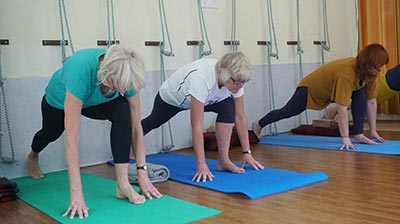
Inexperienced Trainees: Getting A Strong Start
Yoga is also great, as mentioned above, for anyone who is relatively new to exercise and needs to develop basic movement skills.
For those with very little or no experience, or those who are very young or old, developing characteristics like balance, coordination, and deliberate postural control are the place to begin. These are the building blocks for anything more complicated or heavily-loaded in the future.
Yoga offers a fun, sociable, interesting way to develop these skills without rushing into loading or without the high demands of coaching quality as found in gymnastics, for example. If you’re trying to help your kids get active or start to build a foundation for sports/exercise, yoga is a great option.
Returning To Exercise: Easing Back In
This extends to people who have taken time off from the gym, especially following a minor injury or illness.
In these situations, yoga offers a simple and effective route to return to exercise, and may even be possible (in a modified form) during injury … depending on the injury. Remember, even when you’re resting, your body doesn’t want to be completely sedentary.
Regular light movement helps you to stay strong, coordinated, and to improve recovery through things like better blood-flow and effective hormonal/cardiovascular changes. This is obviously a great way of staying or getting active after time off, without charging back into strenuous activities you’re not ready for.
Dealing With Injury: Rehabilitation And Light Exercise
If you’ve ever dealt with musculoskeletal issues, there are significant benefits to yoga. It’s a form of low-loading exercise with focus on some of the same aspects as rehabilitation exercise … stability, control, co-ordination, and balance.
This is a way of managing injury for many people, and it can be beneficial in return to sport or exercise. In the same way, yoga may also help to avoid re-injury as it is likely to progressively load the issue over time, effectively strengthening it to normal function and bringing it back into alignment with uninjured joints.
This can help combat long-term injury risk and avoid asymmetries in muscles on different sides of the body.
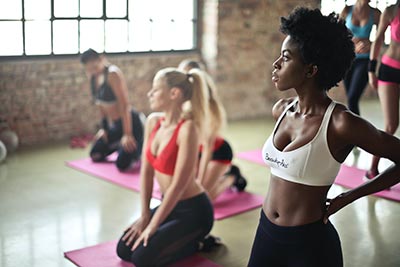
Athletes: Active Recovery For The body And Mind
With serious athletes/trainees, there’s still a place for yoga.
While it may be a form of exercise for those with no experience, such as the elderly and those with injuries, yoga for athletes is a recovery tool.
The low intensity, low impact and non-ruminative nature of yoga makes it perfect as a complementary system for athletes in strenuous sports. Yoga is simultaneously useful for low-intensity and recovery-promoting movement while providing a deliberately relaxing, mindful experience.
These dual-effects are great for athletes, where mental and physical demands are very high. It’s easy to overlook the importance of mental recovery, but it plays a significant role in an athlete’s wellbeing and performance in the long-term.
The movements in yoga are too light to disrupt recovery, while also offering a chance to increase blood-flow and promote recovery. The coordination, balance, and stability practice are also great since they don’t require significant recovery, but are still productive for athletes in sports where these skills are important.
Limitations: Why Yoga Is Far From Perfect
So far, you might think that everyone should be doing yoga. To a certain extent, that’s true; we’d be a healthier population if everyone was doing yoga rather than being inactive.
However, it’s also worth noting that there are serious limitations to yoga as a practice and as a ‘form of exercise’. These are worth outlining because there are times when yoga isn’t appropriate, or when the hype around it simply doesn’t have a foundation in the real world.
Simply put, yoga is good, but it’s not great for everyone, so it’s important to know when it’s right for you.

Yoga Isn’t Exercise For Everyone
Firstly, for most people with an active lifestyle it’s hard to say that yoga is exercise.
It doesn’t really aim at a specific adaptation in the same way that strength, endurance or power training might and it’s very low intensity. This means that unless you’re in the groups outlined above, it’s going to be mobility work, stretching and maybe some core. But not real training/exercise.
This is fine … it doesn’t need to be, but it’s worthwhile keeping in mind if you’re planning on using yoga as your main form of exercise. We see this all the time with people trying to lose weight and/ or get in shape, so it’s important to remember that yoga isn’t great for these goals unless you’re a complete beginner or have reduced function or very little experience.
Some Movement Practice Flaws
While the basics of Hatha yoga are great, there are some areas where it’s an inappropriate form of exercise, and others where the approach taken towards advanced movements is simply far below optimal.
This is obvious in areas like the handstand and headstand where the key focuses of effective lines and spinal neutrality aren’t present in yoga. Handstand training is awesome, but for this kind of movement it’s better to work through a gymnastic strength training program, where the focus on muscular development and progression is safer and more effective.
Equally, there’s no focus on physical development outside of the narrow areas of coordination, mobility and stability. These are important, but they are only part of the much bigger picture of better health, fitness and performance.
If you’re looking for well-rounded physical development, you’re not going to find it in yoga. Remember … it’s all about your personal goals, and finding what fits them best!
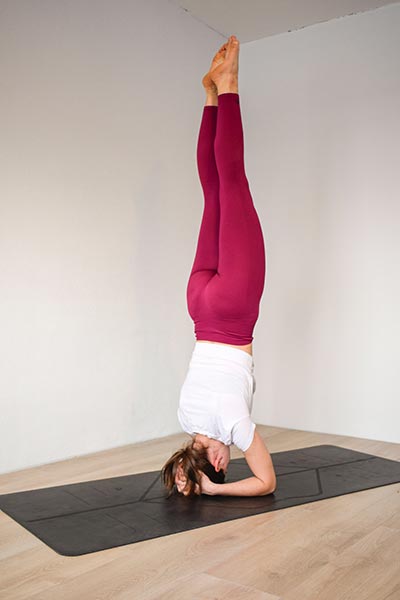
Accommodation: Outgrowing Your Current Practice
The usefulness of a standard class-based yoga session isn’t infinite. Like other forms of activity and exercise, you will become accustomed to the stimulus over time therefore the movements and positions that strengthened your core and posture will no longer do so.
The mobility effects of yoga aren’t likely to suffer this same fate, but the progression will drop off in the other areas. This simply means that you’re going to eventually accommodate the stimulus and the progressions of yoga beyond the basic-intermediate range, resulting in depreciating returns for the average person.
It’s for this reason that the best benefits come to those who are less experienced or able; and class-based yoga doesn’t necessarily accommodate for your developing individual needs. Consider that this will mean self-guidance or changing styles of movement/ activity/ exercise once you feel the classes are not meeting your personal needs.
Yoga Is Not The Best Mobility Solution
While yoga is a great form of structured mobility at a general population level, it’s also not the best form of mobility. The reason it’s useful is because it’s better than nothing and offers guided, structured mobility development that most people just aren’t going to do by themselves.
However, if you’re given the option, classical approaches to static and dynamic stretching are likely more effective. They’re also aimed at muscles and movements, rather than the somewhat artificial positions of yoga, so they’re going to offer better results for your time. Time efficiency is important with the busy lives most of us lead.
There are also very few mobility progressions in yoga, compared with traditional mobility training. The changes from position to position may include large jumps or simply not offer a smooth upward transition with end-range stretching and control.
For this reason, yoga isn’t going to be the right mobility routine for most serious athletes or for dealing with a specific, painful, or uncomfortable mobility issue. You should always prioritize deliberate mobility over yoga. But keep in mind that the combination of the two is great!
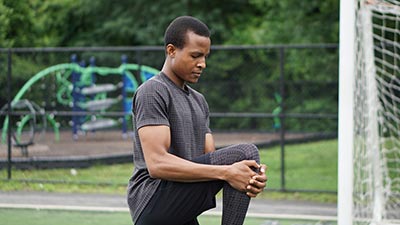
Final Thoughts
Our main point here is simple … just be careful and remember that your own goals and standards need to be the driver for your choices in exercise and mobility.







